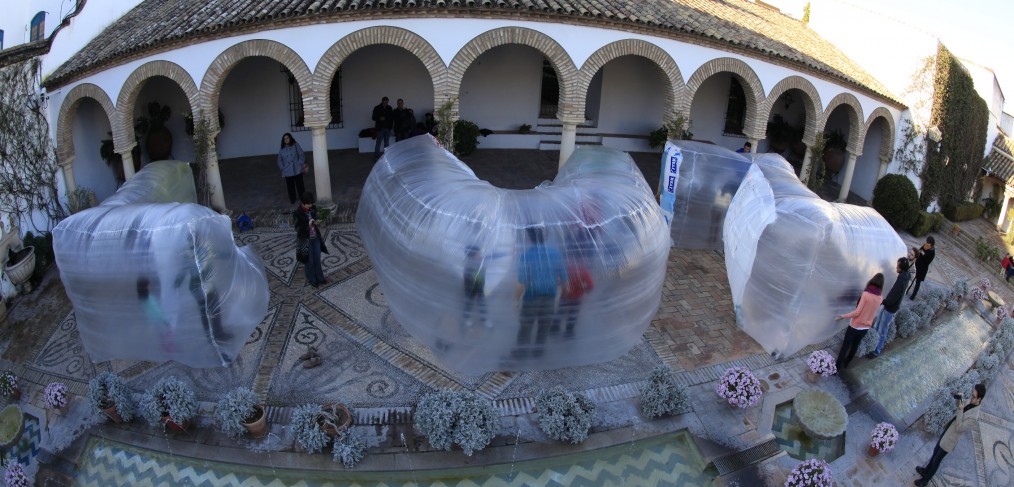//October 2014
Exhibition at Estampa 2014 art fair in Matadero Madrid, with Galería Moisés Pérez de Albéniz.
// July 2014
With the occasion of the Third Meeting of Rectors in Rio de Janeiro, Banco Santander Foundation and Universia invited us to participate for creating a piece of art together with Brazilian university students.
Luxo é Lixo (Luxury is Trash) is a project tributed to the visual poem ‘Lixo/Luxo’ of Augusto de Campos.
The objective was to reproduce the poetry in an urban scale made up with trash. The selected waste were plastic bag, symbol of daily consumption, discarded in some minutes after taking the groceries home. Part of the plastic bags came from the inhabitants of Urca neighborhood, where we were working, another part was obtained through cooperatives and other were provided by the university students taking part in the workshop.
For 10 days students from FACHA and UNIRIO universities collaborated with us in the construction of the piece. Over 4,000 bags have been employed in the installation, which final dimensions are 7 meters high and about 26 meters long.
Working with plastic bags in such a large structure was a challenge, because the bags are lightweight, thin and especially Brazil, which makes them more sensitive.
Luxo é lixo confront the city, the mountains, make contrast to a way of development, to a way of thinking, we want the piece to interact with all these contrasts, with all these contradictions.
The piece was installed at UNIRIO University and also at Urca beach, just under Pan de Azúcar.









